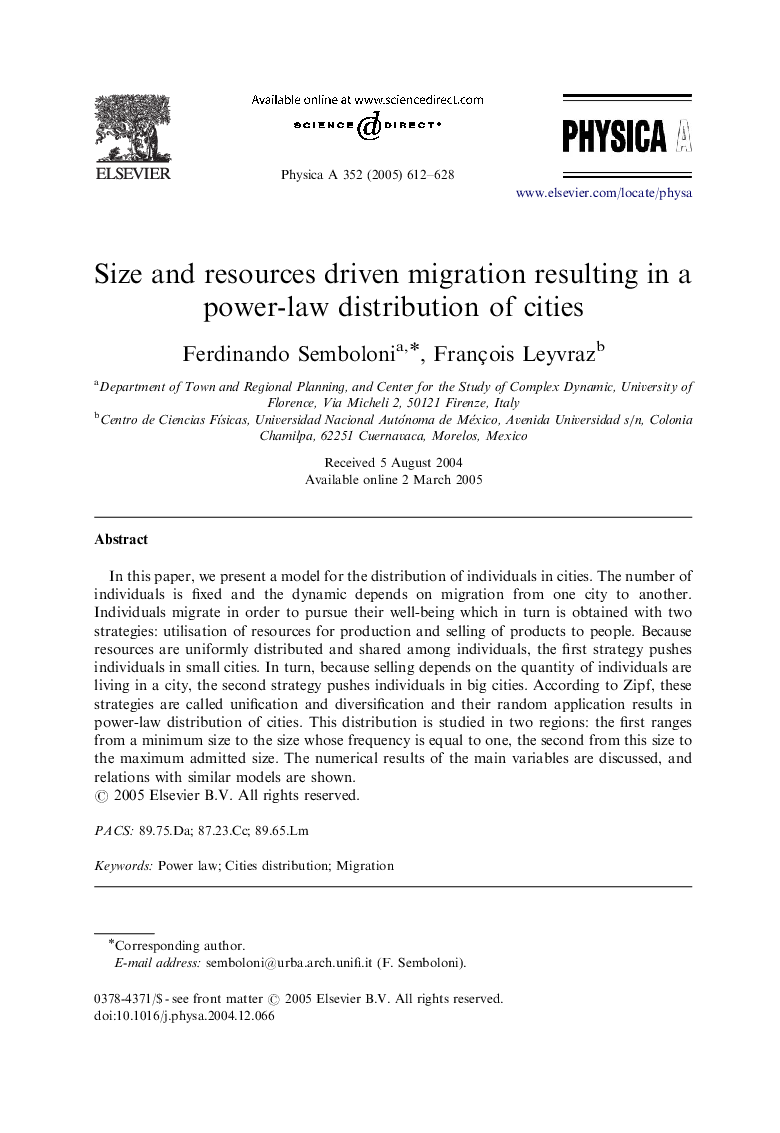| Article ID | Journal | Published Year | Pages | File Type |
|---|---|---|---|---|
| 9727750 | Physica A: Statistical Mechanics and its Applications | 2005 | 17 Pages |
Abstract
In this paper, we present a model for the distribution of individuals in cities. The number of individuals is fixed and the dynamic depends on migration from one city to another. Individuals migrate in order to pursue their well-being which in turn is obtained with two strategies: utilisation of resources for production and selling of products to people. Because resources are uniformly distributed and shared among individuals, the first strategy pushes individuals in small cities. In turn, because selling depends on the quantity of individuals are living in a city, the second strategy pushes individuals in big cities. According to Zipf, these strategies are called unification and diversification and their random application results in power-law distribution of cities. This distribution is studied in two regions: the first ranges from a minimum size to the size whose frequency is equal to one, the second from this size to the maximum admitted size. The numerical results of the main variables are discussed, and relations with similar models are shown.
Related Topics
Physical Sciences and Engineering
Mathematics
Mathematical Physics
Authors
Ferdinando Semboloni, François Leyvraz,
